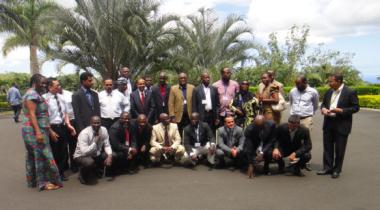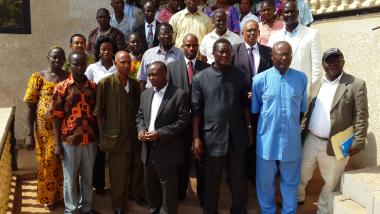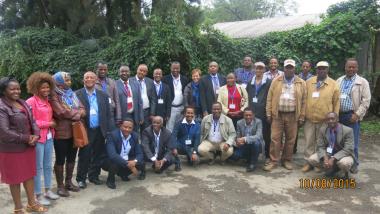The feed and fodder sector is critical to Zimbabwe's agricultural and livestock economy, with dairy farming being a significant contributor to the country's agricultural GDP. Cattle alone contribute 35-38% to the agricultural GDP.
Zimbabwe's livestock and feed sectors face similar challenges to other African countries. However, the current impact of El Niño has had significant implications for livestock farmers and those involved in the feed sector. El Niño disrupts global weather patterns, causing periodic warming of sea surface temperatures, resulting in drought conditions.
Drought has a devastating impact on forage crop production, causing shortages of hay, silage, and other essential feeds. It also disrupts the growth and harvesting of hay, exacerbating the shortage. Producing silage is also challenging during El Niño events as it requires a significant amount of water, which is scarce during such periods. Consequently, farmers have no choice but to rely on imported feeds, driving up costs and adversely affecting profitability.
Moreover, El Niño-induced droughts also reduce water sources, putting animals under stress and potentially increasing mortality rates. The lack of water negatively impacts livestock productivity, leading to lower milk yields, reduced weight gain, and poorer health. Drought conditions also degrade grazing lands, reducing the availability of natural forage and forcing livestock to graze on less nutritious, dry, and sparse vegetation. As pastures diminish, overgrazing becomes a risk, causing long-term soil degradation and reduced land productivity.
Zimbabwe is currently focused on three main agricultural priorities: improving fodder availability, enhancing dairy farming practices, and supporting smallholder farmers. These efforts are aimed at creating a more resilient and productive agricultural sector, ensuring food security, increasing rural incomes, and promoting sustainable agricultural development. The country produces various types of fodder, including grass hay, maize silage, wheat straw, and lucerne. These are crucial for maintaining livestock health and productivity, especially during the dry season when natural pastures are insufficient.
This week, stakeholders in the sector met in Harare to discuss sector challenges and launch a Multi-Stakeholder Platform (MSP) for the Feed and Fodder Sector. Zimbabwe is now the fifth country, along with Kenya, Uganda, Cameroon, and Nigeria, to launch an MSP for this sector. The event was officiated by Honorable Davis Marapira, Deputy Minister of the Ministry of Lands, Agriculture, Fisheries, Water, and Rural Development. Hon. Marapira emphasized the importance of the RAFFS project in building resilience and reducing livestock deaths caused by hunger. This initiative aligns with Zimbabwe's National Development Strategy 1 (NDS1) and the livestock growth plan, which aim to address low production, productivity, and market competitiveness in the livestock sector.
Hon. Marapira highlighted the significant role of the livestock sector in Zimbabwe's economy, particularly the contribution of cattle to the agricultural GDP. Livestock and livestock products, such as meat, milk, eggs, hides, and manure, support rural livelihoods and serve as strategic household investments. Small ruminants and poultry also provide essential safety nets during droughts.
The government has implemented strategies to respond to challenges such as insufficient feed, poor animal health, limited market access, and financial constraints. Initiatives under the Livestock Growth Plan, including the Presidential Silage Scheme and the Presidential Legume Pasture Program, have been put in place. The Presidential Borehole Drilling Program ensures a reliable water supply for livestock.
To improve fodder availability and mitigate the impact of droughts on livestock, the government has launched the Presidential Silage Scheme and established fodder banks. The Hay Baling program involves baling hay in areas with high rainfall and transporting it to drought-prone regions. These initiatives aim to ensure a consistent feed supply for livestock.
Programs such as the Presidential Legume Pasture Program and the construction of water troughs at functional boreholes are part of Zimbabwe's efforts to enhance livestock nutrition and water access through rural development programs. These programs contribute to improved fodder production and utilization.Companies such as Dendairy and Kintyre Smart Dairy Farm play a significant role in the dairy sector. Dendairy processes milk from over 30 producers and produces a range of dairy products. They also grow fodder on their farms, ensuring a steady supply for their dairy cattle. Similarly, Kintyre grows enough fodder for its farm and supplies it to neighboring farms.
The dairy sector supports many smallholder farmers who rely on it as their main source of income. Initiatives that provide training, improved breeds, better feed, and veterinary services are crucial for enhancing productivity and quality in the sector. The local dairy industry needs to be prepared to compete with more established industries in other African countries. To do this, they must strengthen local feed production to reduce costs and improve competitiveness, enhance infrastructure such as irrigation systems and dairy hubs to support efficient production and distribution, and empower farmers, especially smallholders, through training and resources to improve production techniques and ensure consistent quality.
Improved forage technologies present numerous business opportunities for Zimbabwe's agricultural sector. These advancements can greatly improve the feed and fodder landscape, particularly for dairy and livestock farmers. There is a growing demand for quality forage in Zimbabwe, creating a significant market opportunity. Farmers and entrepreneurs can produce and market high-quality forage to capitalize on this demand. The increasing adoption of improved forage varieties by local farmers is driving this market for both raw and processed forage products.
The forage industry in Zimbabwe provides opportunities for entrepreneurs. By focusing on climate-smart forage varieties, commercial seed production, reinforcement of veld/rangelands, hay production, and silage production, businesses can meet the growing demand for high-quality forage and contribute to the sustainability of livestock farming. With careful planning and investment, entrepreneurs can take advantage of this market and support farmers in providing the best feed for their livestock.
Silage production is an effective method for preserving forage and maintaining its nutritional quality, particularly in semi-arid regions prone to droughts. Key considerations for producing silage include significant machinery investment, suitability for high-return enterprises such as dairy or pedigree livestock farming, and the lack of regulated nutritional quality standards that hinder commercial production and marketing. Entrepreneurs can develop cost-effective solutions for silage production, advocate for the establishment of quality standards, and regulate the industry to ensure the availability of high-quality silage, thereby boosting livestock farm productivity.Commercial seed production of improved forage varieties is a profitable venture.
By focusing on high-yielding, disease-resistant forage species, seed producers can meet the increasing demand from livestock farmers. This sector requires significant investment in research and development to ensure the availability of quality seeds that cater to diverse climatic zones within the country. Reinforcing and rehabilitating rangelands with improved forage legumes or grasses is essential for sustainable livestock farming. This practice enhances soil fertility and provides high-quality grazing material, improving livestock health and productivity. Businesses specializing in providing these improved forage solutions can thrive, especially if they offer comprehensive services that include soil assessment, seed provision, and pasture management.
Developing branded forage-based feeds and supplements offers a unique market niche. Entrepreneurs can take advantage of this by developing, branding, and marketing innovative feed products tailored to the nutritional needs of different livestock species. For instance, supplements based on Mucuna pruriens have shown positive impacts on livestock growth performance. Strengthening rangelands by introducing improved forage legumes or grasses can enhance the resilience of grazing lands.
The Malabo Declaration, adopted by African Union (AU) member states in 2014, set ambitious targets to improve nutrition and reduce child stunting across the continent. However, as of 2023, progress toward these goals has remained elusive, with significant disparities in achievements among member states.
According to the Fourth Biennial Review Report (BRR), the continental target of reducing the prevalence of stunting to 10% or less has not been achieved. Out of the 40 AU member states that submitted reports on stunting, only seven are on track: Cape Verde, Comoros, Ethiopia, Gabon, Mauritius, Seychelles, and Tunisia. These countries have made commendable progress, with Tunisia reporting a stunting rate as low as 0.01%.
Meanwhile, four other countries—Burkina Faso, Egypt, Kenya (17.6%), and Somalia (18.0%)—are making progress toward the 2025 target. Despite these efforts, stunting remains alarmingly high (above 25%) in 19 member states, including Uganda (26%), Sierra Leone, Zimbabwe (26.7%), Cameroon (28.7%), and Nigeria (30.5%). Madagascar reports the highest prevalence at a staggering 79.7%.








